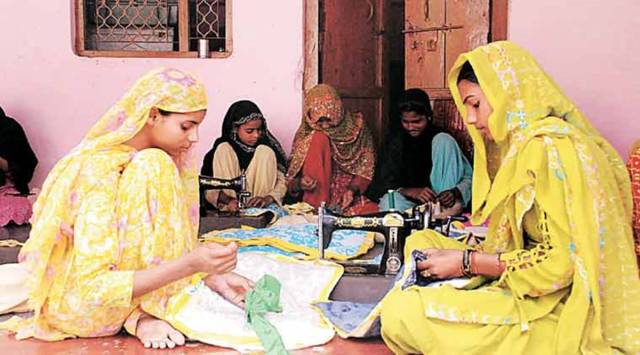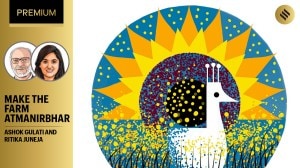With the proportion of non-performing assets (NPAs) in bank loans given to self-help groups (SHGs) seeing a steady rise in the previous financial year, the Union Ministry of Rural Development has asked states to “monitor the status of NPA district-wise” and take “corrective measures” to “recover overdue/ outstanding dues”. In some states, NPAs make up more than a quarter of the loans taken by SHGs, with Uttar Pradesh seeing a 15% jump.
The ministry asked state officials to take action during a Performance Review Committee meeting held last week, it is learnt.

The issue of NPAs in bank loans to SHGs was one of the important items on the agenda of the meeting, which reviewed the Deendayal Antyodaya Yojana-National Rural Livelihoods Mission, under which the government provides support to SHGs, including bank linkages.
Story continues below this ad
According to the agenda papers, the outstanding bank loans, to about 54.57 lakh SHGs across the country, amounted to about Rs 91,130 crore at the end of March, of which Rs 2,168 crore or 2.37% were NPAs.
This marked a rise of 0.19% in overall NPAs in SHG loans compared to financial year 2018-19. However, some states saw a sharper increase than others. In all, 22 states and Union territories had a higher ratio of NPAs in SHG loans than the national average.
At the meeting, the State Rural Livelihood Missions (SRLMs) were told to “work out the amount to be deposited with banks before Sept 20 to avoid the account becoming irregular/ NPA”.
Uttar Pradesh, which has 71,907 SHGs, reported that 36.02% of the loans taken by the groups were NPAs at the end of March 2020, from 22.16% at the beginning of last financial year.
Story continues below this ad
UP was followed by Punjab, which had an NPA share of 19.25%, Uttarakhand (18.32%) and Haryana (10.18%). In Arunachal Pradesh, the NPA proportion stood at an alarming 43%, though the number of SHGs there is just 209.
In seven states (Madhya Pradesh, Assam, Gujarat, Maharashtra, Nagaland, Himachal Pradesh and Tripura), NPAs comprised 5-10% of the loan amounts to SHGs. In 10 others (Chhattisgarh, Goa, Tamil Nadu, Odisha, Rajasthan, Meghalaya, Jharkhand, Telangana, Karnataka and Kerala), the NPAs made up less than 5% but were higher than the national figure of 2.37%.
Only six states and UTs had NPA share below the national average — Manipur (2.13%), Sikkim (1.44%), West Bengal (1.38%), Bihar (1.29%), Jammu & Kashmir (1.07%), Andhra Pradesh (0.78%) and Mizoram (0.62%).
Last week’s meeting underlined that states needed to take measures to bring NPAs under control. “All SRLMs are expected to monitor the status of NPA district wise and wherever instances of NPA or overdue are observed immediate corrective actions should be taken to recover overdue/ outstanding dues.”
Story continues below this ad
The meeting also stressed that a mechanism under which representatives drawn from SHGs monitored loans had proved critical in ensuring timely repayment and should be institutionalised in all bank branches.









